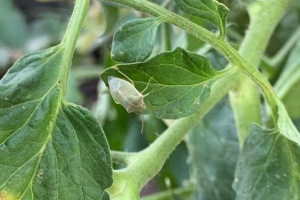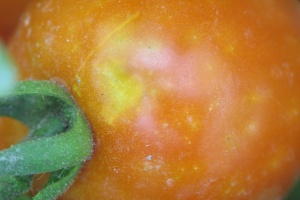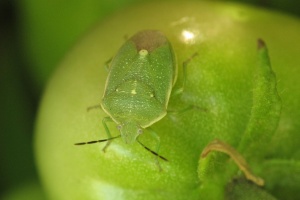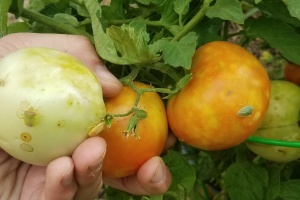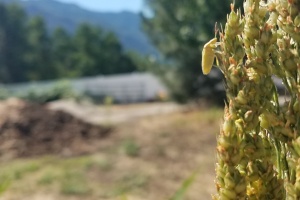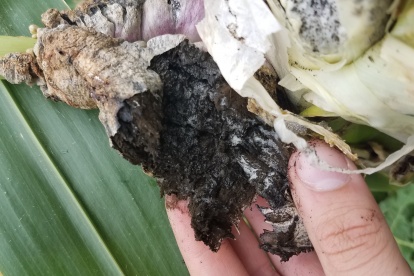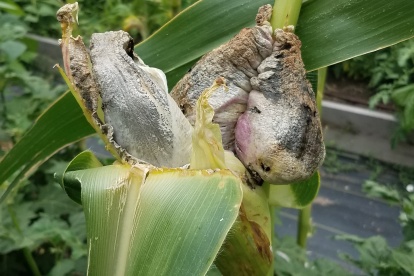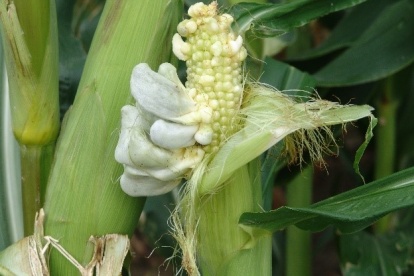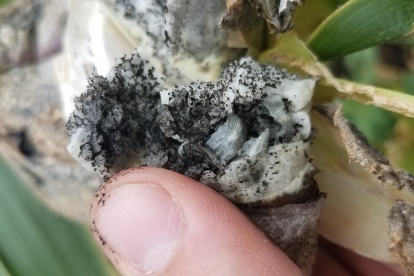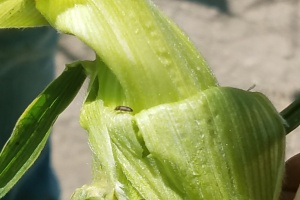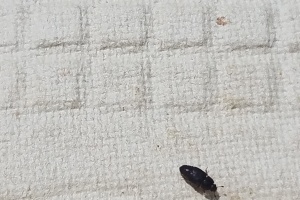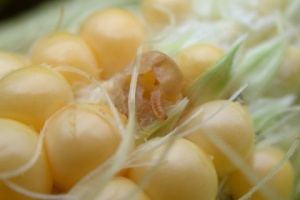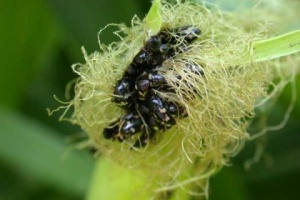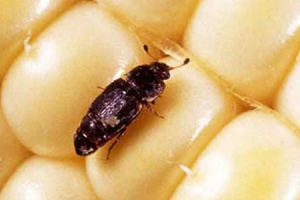In this issue:
- Stink Bugs: Currently ALL OVER Utah and causing damage to tomato crops
- Corn Smut: Rare in Utah, but infections have been sighted
- Corn Sap Beetles: Typically, a secondary pest in corn, but is now notable due to high populations
Stink Bugs on Tomatoes
Overview
Stink bugs are being reported in large numbers across the state. This is due to abnormal environmental factors that occurred this year. Examples include a wet spring, a delayed start to summer, and the randomness of cooling rains. Stink bugs produce an “aggregation pheromone” that attracts them to one another. This allows them to cluster in mass groups. Stink bugs belong to the family Pentatomidae. Specific species being noted this season include the Green stink bug (Acrosternum hilare), Say’s stink bug (Chlorochroa sayi), and Uhler’s stink bug (Chlorochroa uhleri). Adults are shield-shaped, nymphs tend to be more rounded, and the eggs are barrel-shaped which are laid in clusters of 10-30 on host plant leaves. The stink bugs will overwinter as adults on the ground near weeds or plant debris. Infestations typically occur along field edges that border weeds. When the stink bugs are disturbed, they emit a foul odor.
Damage
Both adult and nymph stink bugs have straw-like piercing-sucking mouthparts which they use to feed on the tomato fruits to suck out the juices. They will feed on several locations which cause the underlying tissue to become callous and causes yellow discoloration on red fruits. Damaged fruits are safe to eat, but the flavor may not be as developed or as marketable to consumers.
Management
Cultural
– Monitor for the presence of stink bugs on your site by shaking the foliage over a tray and noting the numbers.
– Hand remove stink bugs from your tomatoes.
– Remove all weeds from the border areas along your fields or gardens.
Biological
– Natural enemies of stink bugs include parasitic wasps, predatory stink bugs, assassin bugs, wheel bugs, spiders, and birds.
Chemical
– Small numbers of stink bugs can cause serious damage to tomatoes. Tomatoes destined for the fresh market will tolerate less injury than those for processed markets. In tomatoes, stink bugs should be managed at the point when fruits reach 1 inch in diameter.
CLICK HERE to view commercial insecticide options for stink bugs
CLICK HERE to view home insecticide options for stink bugs
Additional Resources
NEW Common Stink Bugs of Utah (USU Fact Sheet)
Stink Bug Management on Tomatoes (Utah Veg Production & Pest Management Guide)
Brown Marmorated Stink Bug Management for Fruits and Vegetables in Utah (USU Fact Sheet)
Stink Bugs on Tomatoes Management (California IPM)
Stink Bugs on Tomatoes Presentation (Ohio State University Extension)
Corn Smut (Ustilago maydis)
Overview
Corn smut is a fungal disease spread by Ustilago maydis. It is relatively rare in Utah, but due to environmental conditions this season it has become more present. Corn smut is spread by the rain or water-splashed spores from precipitation or overhead irrigation. The fungus develops white-grey, fleshy galls (swollen plant tissue) that form on the tassels, kernels, leaves, or shoots. As the galls age, they turn black and eventually erupt releasing thousands of spores.
Management
Plants are most commonly infected early in the season. Be sure to inspect succulent corn tissues for the spongy grey galls. Once the ears begin to form be sure pull back the leaves and examine for any gall formation on the kernels. Remove the galls throughout the season and destroy any plant debris in the fall.
There is no fungicidal treatment for corn smut.
Additional Resources
Common Corn Smut (Wisconsin Extension)
Smut Diseases of Corn (Nebraska Extension)
Common Smut (Nebraska Extension Crop Watch)
Corn Sap Beetles (Carpophilus dimidiatus)
Overview
In Utah, Corn sap beetles are usually viewed as a secondary pest on sweet corn. However, high populations have been reported in some areas making them more of a threat. Adults are very small and less than 5 mm long. They are black with club shaped-antennae. Larvae are white with a brown head and three pairs of legs near their head.
Damage
Corn sap beetle adults and larvae both have chewing mouthparts which they use to feed on the corn silk and pollen. They can cause damage during the tasseling stage of sweet corn. Sap beetles can also potentially attack tomatoes, melons, and other overripe fruits and vegetables.
Management
– Prevent damage from other primary pests (corn earworms & earwigs) that could attract the corn sap beetles.
– Harvest sweet corn promptly when ripe
– Use bait/pheromone traps to monitor and reduce populations
– Disk or plow crops immediately after harvest
– Insecticide treatments are generally inappropriate because the beetles and larvae are protected by the ear of the corn.
CLICK HERE for commercial insecticide options
CLICK HERE for home insecticide options
Additional Resources
Sap Beetles (Minnesota Extension)
Sap Beetles (Iowa State Extension)
Sap Beetle Management in Mature Corn (North Carolina State Extension)

